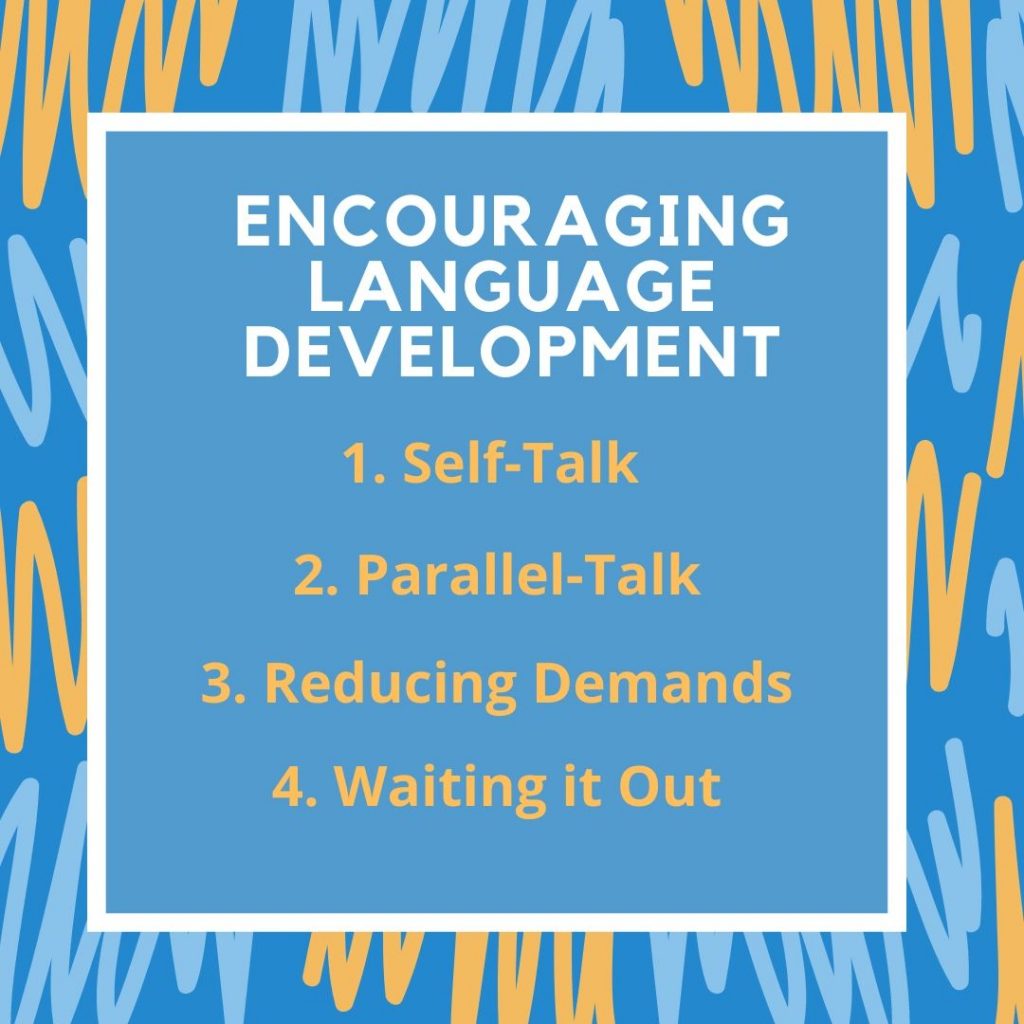How to Encourage Language Development
Are you concerned your child may have a speech delay? Now more than ever, parents are expressing concerns of language delays as a result of COVID precautions and limited social engagement. In this post, I will share a few simple communication strategies to try at home.
The best thing a parent or caregiver can do to promote language is to pay attention to their OWN language. Are your sentences overly complex? Are you asking too many questions? Are you commenting during play? All of these will most likely play a role in how your child will develop speech and language.
Let’s break down 4 common techniques pediatric speech language pathologists will use in their play-based sessions to promote communication. You may find you are already using some of these without even knowing it!
- Self-talk: Talk out loud about everything you are doing when you are around your child. For example, if you are cleaning up the kitchen, talk about it! It might sound something like this, “Put the dish in the sink, water on, wash wash wash.” Make sure to use simple words to describe what you are seeing, doing, feeling, etc. I encourage parents to use this strategy during familiar routines (i.e. putting on pajamas, brushing teeth, going potty, etc.).
- Parallel-talk: This is the same idea as self-talk, but you place the focus on your child. Follow your child’s lead and talk about everything they are experiencing. For example, if they are playing with blocks, talk about it! It might sound like this, “Block goes up! Up, up, up. Oh no! Knocked down!”
- Reduce demands: This strategy is one of my favorites. Some children are able to feel the pressure being placed on them to communicate. One of my least favorite phrases a parent can use is, “say __.” Instead of this, try modeling it for them during play. I like to focus on 1 or 2 words during an activity. For example, during bubbles, I could focus on “pop” and “up” over and over. This provides them with multiple models of simple words. Incorporated with play, this makes them more likely to join in with these fun new sounds.
- Wait it out: Sometimes all children need is a little more time. I like using this strategy with built up anticipation and energy during cause and effect games. For example, if you are blowing bubbles, start it off with, “Ready…. Set…..” and wait at least 5-10 seconds before responding with an energetic “go!” After a few models, children are more likely to join in with a new noise, gesture, or facial expression.
All in all, children benefit from slow and simple speech when first learning to communicate. Try these strategies out and see how they work!






